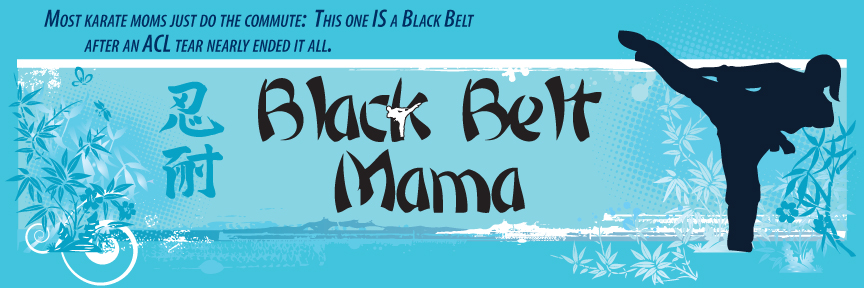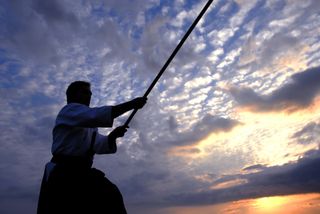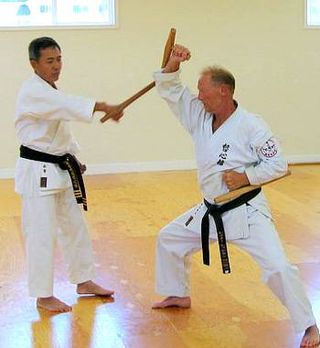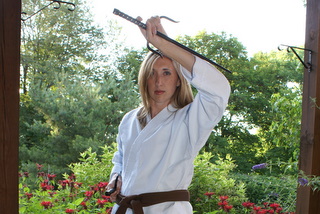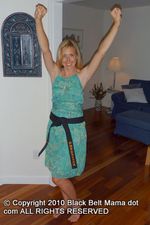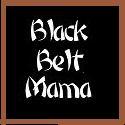In a Perfect World. . .
- Three-year olds who are taken to Chuckie Cheese for an afternoon with a good friend would reward you with an afternoon of peace, not screaming and tantrums reminiscent of something out of The Exorcist.
-
A landscaping and yard care company would show up at my door and offer to re-seed my yard for free, just because my yard looks that bad and they feel sorry for me. (Plus, I will totally review your services online. No seriously, email me. For real.)
-
A patio company would also show up and offer to install a beautiful paver patio complete with a fire pit and water features, also for free. See the statement above. Email me. Seriously. Free advertising people.
-
I wouldn't have to stop taking my allergy meds for five days before being tested, therefore rendering myself almost as miserable as a certain 3-year old. You know you have some serious allergy issues when your tongue itches so badly that you have to scratch it with your teeth.
-
Tile floors would clean themselves.
-
I would have someone who could come to my house on a daily basis to blow dry the back of my hair to make it look the way my arms just can't.
-
My kids would realize that I am not a short order chef and would just gratefully eat what's put in front of them.
- The three brownies I shoved down my throat to help me cope with the whining and screaming kid would be eaten by stress and not on their way to become butt fat.
- People would pay their damn bills and the phone company would stop giving me the leftover phone numbers from people who are wanted by creditors. For the final time, Luis Ramos does NOT live here and I really wish you would stop calling me at all hours of the day despite the fact that I've told you 5000 times that no one lives here by that name, and take my name off your list already, etc. etc. etc. (I think I need another brownie). And here I thought I was rid of this problem when I ditched my last phone number.
- Grumpy, moody three-year-olds would wake up happy after a two hour nap.
- I would have started karate when I was a lot younger.
- I would have gotten to Shodan at least, before injuring myself with a confidence shattering injury that continues to stack the challenges in front of me and make them seem even more insurmountable.
- Students would turn their assignments in on time and not try to make me feel guilty for not accepting their assignments.
- Children would close the exterior door when they come inside instead of leaving it wide open for like two hours. It's good polar bears aren't native to this area; however, I fully expect a squirrel to run across my bed tonight while I'm trying to sleep.
- My grass would stand up and fight instead of admitting defeat and laying down to die.
- Mom's wouldn't be the only ones who have to remember that their kid had a hair appointment today. . . two hours after it was supposed to happen. This is the second time this has happened. My brain is obviously too full of crap to keep track of everything.
- When you start Monday off on the wrong foot, you'd be able to recover by Tuesday instead of having to declare the week a total fail already.
You know you loved this. Subscribe for more.
Head over to The BBM Review and leave a comment for your chance to win an autographed CD by an international recording artist.
There Are No Stances in Kobudo
Filed under: Admired Martial Artists Month, Guest Post
By: C. Bruce Heilman, Hanshi, Okinawa Kenpo Karate Kobudo
Although "kobudo" is commonly referred to as an "extension of ones open hand karate", the reality is that kobudo is only an extension of the open hand concepts and not the actual stancing and techniques.
I can still remember the day when I first heard my Instructor make the statement that …"there are no stances in kobudo.” My Instructor was none other than Seikichi Odo, the head of the Okinawa Kenpo Karate Kobudo system and considered one of the top kobudo practitioners on Okinawa. At the time, being a die-hard traditionalist brought up on the value of strong basics, etc. I at first considered that I had a "hearing problem" and that I had just misunderstood my Instructor’s statement, as English was not his first language and Japanese was not mine. However, as time went on I began to understand that I had indeed heard him correctly and that my earlier perception that …"kobudo was just an extension of ones karate,” was off the mark.
With the passage of many years, I now have come to fully understand and accept this concept, and I have to admit some enjoyment when I now find myself making that very statement at various kobudo seminars I give internationally, and see the same look of astonishment and initial disbelief in the eyes of some of the seminar participants. It’s the same look I must have had so many years ago. It makes me wonder if that "smile" I thought I saw on my Instructor’s face so long ago when he first introduced me to the "statement" has any relationship to the one that I'm accused of having occasionally used when I now discuss the same topic.
Let us begin the detailed examination of this statement by first looking briefly at the historical development of Okinawan Kobudo.
Kobudo's Historical Development:
The study of ancient martial arts weapons and their related techniques has, over the centuries, resulted in the development of a variety of schools and systems. These systems can be divided into two basic groups purely for combative purposes: 1) Bugei – martial arts, and 2) Budo – martial arts. The Budo form was developed from the Bugei and Jitsu forms. The Okinawans call these forms "Kobudo" or ancient weapons arts.
Around 400 years ago, Japan began to assert control over the Island of Okinawa. One of the edicts forced the Okinawan people to turn over their weapons to the Japanese. The move was made by Imperial Japanese leaders with almost no realistic political foresight and very little insight into the Okinawan way of thinking. The ruling classes assumed that to gain political and financial control over this tenacious island race, all that was necessary was to disarm the people. Little did the authorities realize that the Okinawan people were such a nationalistic race and so strongly devoted to freedom that they would go to any lengths to deceive and/or hide the weapons they needed to fight their oppressors. Thus the weapons were called "farm implements,” but underground the fighting population was training in the use and proficiency of these tools. Soon the weapons masters became a most feared force in the battle for political freedom, feared by the Japanese and idolized by the Okinawan people whose protectorate they were.
Today, much of the Island of Okinawa has undergone its own industrial revolution, and most of these crude farm implements have been replaced by mechanical and/ or power tools. Yet, the history of these weapons is still part of the rich traditional background of Okinawan Martial Arts, and as important as the physical aspects of the arts.
Kobudo practitioners today, as did their ancient predecessors, perfect weapons techniques by training with kata specifically designed to teach and perfect directional movements, transitional movements, body alignment, balance, grace and coordination between body and weapon.
Further we must recognize that the practice of Okinawan Kobudo, although not formally part of Karate, is almost inseparable from an historical viewpoint. Okinawan Karate practitioners are generally involved to some extent in the practice of Kobudo. While most are at least proficient with a few weapons, few if any can use a wide range of weapons with a high level of proficiency.
The major difference between Karate and Kobudo practice has been that historically, Kobudo practice has not been as systematized as with Karate. Kobudo practice has tended to be focused upon separate "Kobudo Associations.” The very existence of these Kobudo Associations has however, over time, started a trend towards systematization of the Kobudo training, techniques and katas generally around "lineage lines" rather than "karate styles."
Thus, it is clear to see that historically, Okinawan Kobudo has been more organized around "lineage lines" with the practitioners of a particular kobudo lineage coming from a variety of karate styles. Examples of such "lineage lines" include: Taira, Matayoshi, Odo, Motoburyu, Chinen (Yamani-ryu), Kuniyoshi (Honshin-ryu), Uhuchiku, etc. Kobudo Lineages.
However, it is also recognized that some of the kobudo lineage lines have been strongly influenced by the stylistic preferences of its practitioners. The key here is that karate stylistic preferences have only influenced – not dominated the kobudo practice. Therefore, I submit that the conceptual aspects of kobudo practice are more important than the various karate stylistic technical considerations – i.e.: kobudo is kobudo when we come down to the basic concepts – it either works or it does not.
The Role Of Stances:
Since the preference for/and technical execution of stances differ between the various karate styles, -from long Zen Kutsu Dachi's, to moderate length Seisan Dachi's, to short range Sanchin Dachi's – we must therefore look at what the underlying purpose is for a stance.
The underlying purpose of all stancing is very simply – to provide a stable platform for the body – balance. The differences we see in length preferences are not important – it is just the stylistic preference. The balance the various different stances provide, permit the practitioner to exercise "control over the centerline."
In Karate, this "control of centerline" is accomplished by placing the hands "on-guard" positions between ourselves and our opponents. Without a strong balanced foundation, the guard positions would be ineffective. It can also be seen that one may need to make slight adjustments to the "guard" positions depending upon the type of stance being used (long vs. short) in order for the karate-ka to keep correct and effective control of the centerline. This concept is not a stylistic one – it is just good karate.
In Kobudo, the same basic concept of "control of centerline" also exists. The only change here is that this "control" is affected by the “weapon" rather than our hands as in karate. In fact this viewpoint, I believe has given rise to the initial misconception that most karate practitioners have that "weapons are just an extension of one's karate techniques." The key here is that we must also look at some of the other key concepts that must be considered in kobudo practice.
Other Key Concepts:
Among the other key co
nsiderations that are important in kobudo practice are: removal of target, natural relaxed movement, angle attacks, and range of weapon considerations.
The meaning of "removal of target" becomes clear to anyone who has fought with weapons. It is just good common sense to present the minimum target to an opponent and when attacked to be able to remove the target from the path of the opponents attack. In this manner we get away from the "Little John and Robin Hood" picture of two people pounding away on each other with their staffs, to one of being able to "slip the attack" and counter-attack.
In order to be able to remove the target, we have to learn how to "move in a natural relaxed manner" – flow followed by focus. The techniques with the weapon should be more related to wiping techniques than to clubbing or power techniques.
The concept of "angle attack" is also very critical and it goes hand in hand with the consideration of the effective "range of a weapon". We can classify the various different weapons of Okinawan Kobudo into one of three groups: 1) Long Range (nunte bo, yari bo, bo, etc.), 2) Intermediate Range (sai, tunfa, kama, nunchaku, nunte sai, etc.), and 3) Short Range (tekkos, etc.). Obviously, when one has an intermediate or short range weapon and is faced with an opponent with a long range weapon, if you stay at full range you can only at best be able to defend. For you to counterattack you must get in on the opponent, and an angle attack is the best means to accomplish this task.
Next, I draw your attention to an overview of the kata of traditional Okinawan Kobudo. Here we see that the most dominant type of attack presented in the traditional katas (of all the lineages) is the "lunge punch position" – lead hand and foot, same side forward. This is not just a fluke – but it is critical when one considers the issues of removal of target, range of weapon, and angle attack.
Modification of Stancing:
So as a practitioner of Okinawan Kobudo, the important point is not from which karate style you derive from, but rather that you understand that in order to make the kobudo work one needs to understand and be able to execute the concepts discussed above to get the most out of your kobudo practice.
Now we come back full circle to the initial statement of this article, that … "there are no stances in kobudo." The statement does not mean that no stances exist, as we have already discussed the important role of stancing in providing the foundation for balance and movement. But rather what is meant is that the "standard karate stances" are not employed in Okinawan Kobudo. The stancing concept is employed but the actual technical aspects of the stances must be modified. Remember, in open hand, we adjust the hands to effect the same "on-guard" positions out of different karate stances. In kobudo, since the distance between the "guarding portion of the weapon" and the body is larger than in karate, the adjustment is made in the stancing to permit effective centerline control.
The amount of adjustment to the stancing depends upon the length of the weapon. In using a short range weapon such as the Tekkos (claws), the range of adjustment is minor as the weapon is closer to the body. With the long range weapons such as the bo, the adjustment to the stance becomes more significant. In all cases, the end result is the same – effective control of centerline from a natural position – i.e.: just good kobudo that works.
The first area of adjustment for all forward facing kobudo stances is an increased emphasis of the use of the "pigeon toed" position for the front foot. The turning in of the front foot and flexing the front knee to where it is over the big toe of the support foot not only provides a level of protection for the inside of the leg (against attack), but also removes the front leg from the trajectory of the weapon during blocking or attacking techniques. This latter issue is an important consideration as the closer the "swing" of our weapons comes to a straight line to the target the more power we can deliver. Additionally, this type of front foot position provides an excellent basis for pivoting the rest of the body when removing the target.
The second area of stance adjustment focuses on the width of the stance and the opening of the hip position. A normal karate forward stance (Seisan or Zen Kutsu Dachi) uses shoulder width as the guide for the correct width. In kobudo practice the width is adjusted to less than shoulder width with the hips in a more open position. Thus the typical midrange and long range forward stances tend to be narrower and longer than their karate counterparts. It is through these adjustments that the Kobudo-ka is able to maintain control of centerline and minimization of target in a natural relaxed manner.
With respect to the use of the Neko Ashi Dachi (Cat Stance) in kobudo practice, here we also see the need for stance adjustments. Use of the standard karate Cat Stance presents too large of a target and does not permit effective control of centerline. The adjustment here is to shift the rear (support) foot into a position pointing 90 degrees from the opponent and open the hips to point in the same direction. This position is sometimes refereed to as the "Okinawan Back Stance" in some styles of Okinawa Karate. This position permits the practitioner to basically "hide behind" the weapon and makes covering centerline and clearing the defensive zones an easy task.
If one does not make adjustments to their stancing, then you are faced with the situation I refer to as "winning the battle, losing the war". By this I mean, since by using a standard karate stance in kobudo you will be presenting a larger target to your opponent and at the same time have a harder time maintaining control of centerline. When an attack comes you will have to clear a larger defensive area with your block and as a result leave a greater opening for a follow-up attack – thus the situation of getting your first block off but finding yourself hit with the follow-up attack – winning the battle/losing the war!
So in conclusion, while stances do exist in Okinawan Kobudo, they are not the same as those employed in our open hand arts. The concepts are the same, but the technical execution changes. Thus, perhaps a better description of "kobudo" might be to say it is …"an extension of basic karate concepts rather than basic karate techniques."
To read Hanshi's article "An Overview of Okinawan Kobudo" from last year's Admired Martial Artists Month, please click here. To read more about Hanshi Heilman, please go here.
To be entered to win one of the giveaway prizes, please leave a comment. The more comments you leave, the more chances you have to win! Post the Admired Martial Artists button linking back here and you get an extra three entries to win! Just shoot me an email with the url where you've displayed the badge! You can find the html and badge here.
And finally, this is clearly fantastic stuff. Why not subscribe?
A Comedy of Errors, Form of Weapons
When you return after 17 months off and go full blast with the kobudo weapons as you did before, there are bound to be some bumps and bruises. I started off with forearm bruises from the bo and another large and well placed bo bruise right above the elbow on the upper outside of my arm. That one, although painful, was cool. I seem to remember someone saying that if you have that bruise, you're doing it right. I pretty much wanted to wear a tank top to show it off, even in 30 degree weather.
Despite this trophy bruise though, I also had a bit of a sore spot right at my hairline on my forehead, where I kind of bounced the bo off my head. I don't even think I was doing kata at that point. Bouncing a bo off your head truly takes talent when not even doing something official. Truly.
Here's a picture of someone using a bo without whacking himself in the head.
Then came the tunfa. The first night I used them again, I smacked my knee brace pretty good with them. Man, I was thankful I had a brace on and wasn't going it without one. That would have hurt. I also hit myself in the head during the course of kata. I'm trying to remember how I did it, but if I recall correctly (keep in mind this is the second head trauma in two weeks), I believe it was from an over-ambitious upward block. Don't ask.
That's an upward block in the picture below. Clearly, this talented man has the tunfa nowhere near his noggin. You learn something new every day.
Then came nunchaku. Nunchaku and I have had a love/hate relationship for quite some time. While nunchaku, for many men, is an absolute dream weapon, actually operating the little suckers can be quite tricky. I was tempted to ask my one instructor to borrow his foam ones for my first run through, but instead I just went ahead with my wooden ones. If you can recover from ACL surgery, you can take a whack or two from nunchaku.
I took several. I whacked my back much harder than I would have liked to, and I also smacked my thigh hard enough to leave a little bruise. Thankfully, I didn't knock myself unconscious with them. Here's a picture of a woman in Okinawa not knocking herself unconscious with them. When you imagine nunchaku, imagine me like this. . .
Finally, we come to the sai. One must keep in mind that my sai are brand new Shureido sai. I've been using craptastic sai for many years and am only now getting to use some decent sai with the right angle where your hands go. Here's a picture of me, pre-injury, acting like I know what I'm doing with my crappy ones.
So far, I have yet to injure myself with my new ones, but I do have to admit that I am having a terrible time getting them caught in my gi sleeves and top. It's a good thing I wear a tank top underneath during training because my sai are convinced that I don't need to wear my top at all. I need to figure out what the heck I'm doing wrong. Disrobing at the dojo, during class, or (God Forbid!) during eventual testing would be just a tad bit embarrassing.
Speaking of embarrassing, my biggest gaffe so far, happened on Saturday morning. During a black belt/wanna-be-black-belt workout at the dojo, we were working on some tunfa kata. Still getting used to my new purple heart custom Crane Mountain tunfa, and sweating up a storm, I did the equivalent of what would be a major party foul, like spilling a full beer for example. I spun my tunfa around and to my horror, watched it spiral toward the floor. It hit with a loud klunk, despite the foam floors. A girl can hope that no one noticed, but my usual training buddies around me had definitely noticed. One was grinning ear to ear and the other sort of chuckled. They laugh because they've done it themselves, many times, probably, right guys?
Anyway, having your training buddies notice is one thing. Having Hanshi announce that "dropping your tunfa is optional" as he explains the steps in the kata. . . well, you can pretty much guess that everyone now knows. Yep, everyone. Brown belts are there for amusement purposes though right? I take that role seriously. I figure if you can't laugh at yourself, then it's going to be pretty lonely as everyone else laughs at you right?
Returning to karate may be like riding a bicycle; but the words of my surgeon continue to echo in my head, "You're not going to be any good at it for a while."
He's a wise man indeed.
Check out The BBM Review and leave a comment to win an autographed CD by an international recording artist!
Trust Your Gut: Keeping Safe in an Unsafe World
Years ago I read Gavin de Becker's book "The Gift of Fear." If you haven't ever read it, you really should. I had seen him on the Almighty Oprah and listened intently to her interview with him. He talked about the presence of a sixth sense, and said how when something is wrong, people can sometimes pick up on it if they allow themselves to trust their gut. He said that women have an uncanny ability to do this, and that it is largely responsible for saving the lives of many women who have been in bad situations and figured a way to avoid or get out of it, simply by paying attention to that inner voice.
This week, my inner voice was talking loud and clear to me while at the grocery store.
I was at the grocery store during the middle of the day with Lil C. One might think that the middle of the day is a safe time to go grocery shopping. However, when I was pregnant with Lil C, a woman was abducted at 3:30 in the afternoon from my previous grocery store. Two men approached her in the parking lot, held a gun to her back and told her to get in the back seat of her own car. They then drove her around for nine hours, showing her off to their friends, as if she were some type of trophy or something. After nine hours, they parked the car and walked away, never to be caught. She was shaken, but physically unharmed. It terrified me because this was also around the time that the news media was buzzing with stories about crazy people cutting babies out of women's stomachs. Needless to say, I made Mr. BBM go to the grocery store for a while after that and I was even more aware than usual of my surroundings whenever I found myself in a parking lot.
This week, I was hyper aware of a young man who seemed to be following me around the grocery store. The thing that brought him to my attention, besides the fact that I could literally feel him looking at me, was the fact that my cart was loaded with groceries as I grabbed a couple things from each aisle. He lacked a cart or even a basket and instead just carried a bar of soap and deodorant around the entire store.
It seemed odd to me that I was running into him in each and every aisle when these were the only two things he was going to buy. Something was definitely not right. I kept my purse tightly on my shoulder, and my cart right with me at all times. I made sure to make eye contact with him a couple times. I wanted him to know that I was aware of his odd behavior. He would always look away quickly, but yet there he was, in the next aisle.
As I finished up and picked a checkout aisle, there were several aisles open around me. Yet, despite a full cart, he got in line behind me. There were at least three other aisles where he could have checked out faster. I was starting to get nervous.
Then it got worse. I noticed another young man, dressed much like the guy behind me, standing out in the grocery store lobby. He was holding the pay phone in one hand and staring into the store in my direction. My checkout girl was taking her sweet time, plus they had to run a check on one of my products, yet the guy still stayed behind me. I kept an eye on the guy in the lobby and noticed that despite the fact that he was holding the phone receiver to his mouth, he wasn't talking at all.
I turned around and looked at the guy behind me again. I wanted him to know that not only did I realize he was acting strange, but that I suspected something was up. I gave him a steady look. I also wanted him to know that I would be able to identify him if he tried anything.
Meanwhile I was trying to figure out what exactly I should do. Usually when I'm at the store, there's a very nice guy who takes care of the carts who will offer to walk out with me and help load my car. He's a total sweetheart and I looked around for him but didn't see him anywhere. It figured that it would be his day off.
Then Lil C made the announcement that she had to go to the bathroom. I finished checking out and asked my checkout girl if she would keep an eye on my cart. I parked it at customer service and took Lil C to the bathroom. I figured it would give me time to think and the guys would maybe disappear.
While walking Lil C to the bathroom, I questioned whether or not I was overreacting. But all of the things together seemed very odd. I decided I was being rightfully cautious.
We finished in the bathroom and I walked back to the front of the store to get my cart. The two guys were nowhere to be found. I had a brief moment where I allowed myself to believe they were completely gone; but I decided I still needed a plan.
I got my car keys out, jammed a long pointy key between each of my knuckles in my right hand and made a fist. I put my thumb nail on the panic button for my car alarm. I was prepared to land that fist in someone's throat if I was threatened and in danger. I told Lil C I was going to put her in the car and that I needed her to get herself buckled quickly. I waited until I saw a big non-suspicious looking guy walk out of the store and went right behind him.
I comforted myself with the fact that I had parked right in front of the store, only four spaces away, and that there were plenty of people buzzing around. I also know though, how quickly things can happen and that often, people don't want to get involved.
I took a good look around the lobby, saw neither of the guys, scanned the parking lot and didn't see them there either. I thought it was a good time to go.
I walked quickly, making sure that I was constantly scanning the area, even behind me. I unlocked my car with the automatic key opener, quickly deposited Lil C in her seat, threw my purse in between the seats, and closed and locked the doors. I took another look around, and that's when I saw him.
The guy who had been on the phone was now standing outside the store. He was looking right at me. I met his eyes, and didn't take them off of him as I made my way to the back of the car. My heart began to pound, yet I knew what I was going to do if my suspicions were correct. I unlocked the trunk with my key instead of unlocking the entire car, jammed the keys back in between my fingers, and began loading my groceries. I called to Lil C to get buckled and she said she was ready to go. I didn't take my eyes off of him while loading, except to quickly scan the other directions to look for the other guy.
I unloaded the groceries, shut the trunk and locked it. I always park beside the cart return so I don't have to walk far from the car, so I pushed my cart in and quickly got in my van and locked the door.
Without wasting a second, I started the car and took one last look at the guy before backing out. I kept my eye on him with my rear-view mirror to make sure nothing suspicious was going on. I didn't want to be followed. I drove home a different way, keeping my eye on the cars behind me. When I was convinced that I wasn't being followed, I went home and pulled in my garage.
It had been a completely nerve-wracking visit to the grocery store. Usually the most stressful thing I have to deal with is keeping Lil C from jumping out of the cart and gorging herself in the cookie aisle.
Was it possible I was overreacting a bit to these two guys and their intentions? Maybe. But I would much rather be prepared for anything and have nothing happen, than be the Mom in the parking lot who is caught off guard.
So what are some things that you can do to protect yourself in these types of situations? There are lots of things you can do, things that I do every time.
Always make sure you walk with confidence:There was an article on AOL the other day about how muggers pick and choose their victims based on how they walk. Walk with your head up, don't be distracted by your cell phone, IPOD, or by digging in your purse. People who walk with confidence and meet other people with eye contact are less likely to be attacked.
Be aware of where you park: People who forget where they park and spend time wandering to find their car, people who park in areas that are not well lit, and people who park in areas where there are places where people can easily hide are more likely to be targeted. I always try to park as close as possible to the store, in an area that is well lit and easily seen by many people. I also have a thing about parking next to creepy looking vans, work trucks, etc. I just don't do it. You have seen Silence of the Lambs right?
Be aware in general: If something sets off your sixth sense, it's wise to pay attention. It's also wise to scan the parking lot as you walk, letting everyone in the area know you are alert and aware.
The Key Fist: If you don't know how to throw a good punch, learn how. A good well placed punch if something does happen is a wonderful thing. A fist that contains a key between each knuckle and then aimed at the neck or eye area is golden when it comes to a true threat. Having your thumb on the panic button for your car is also a good idea. Talk about a rude awakening for someone stupid enough to try something against a woman armed like that!
Trust Your Gut: If you think something is suspicious, don't dismiss it. That feeling may just save your life. In hindsight, I probably should have asked someone from the store to walk out to my car with me. I did make sure I was walking out with a big non-threatening looking guy though when I did finally make my move to the parking lot. But don't feel silly if you feel threatened. Most grocery stores are happy to provide customers with a little help getting to their cars.
Always Have a Plan: Sure, you can drive yourself nuts, being paranoid and overreacting about each and every person who is slightly suspicious. But if you create a general plan of action for these types of circumstances, you won't feel so freaked out if and when you do need to set a plan into action.
Don't Linger: Once you're in the car, lock the doors immediately and GO! Women who linger in parking lots make themselves targets. Parking lots are not good places to mess with the stuff in your wallet, make a quick phone call, or fix your make-up. Almost every self defense expert I've ever heard talk about this has said that women spend a ridiculous amount of time in their cars before they actually turn the key and leave. Don't dilly dally.
Lock the Doors: This is just plain common sense. Don't ever leave your car unlocked, not even to drop something off in the post office. Never leave your doors unlocked. It's an invitation for trouble.
Never Go to a Second Location: Gavin de Becker will tell you this and so does everyone else who knows anything about self defense. Don't ever allow yourself to be taken to another location. If things get bad and you're being attacked and abducted, your survival rate drops drastically if you let them take you to another place. Fight as hard as you can, remembering that the groin, eyes and throat are fantastic targets. Scream for help and instead of just screaming "help," scream what's happening. "He's trying to take me and I don't know him." "I'm being attacked. Someone call the police and help me!" Make yourself impossible to ignore and never give up.
For more information about Gavin de Becker, his tips and books, go here.
What other things do you do to protect yourself in the parking lot?
While you're here, why not subscribe so you don't miss a post!?!
Talk Radio Tonight!
Be there.
10 PM EST.
